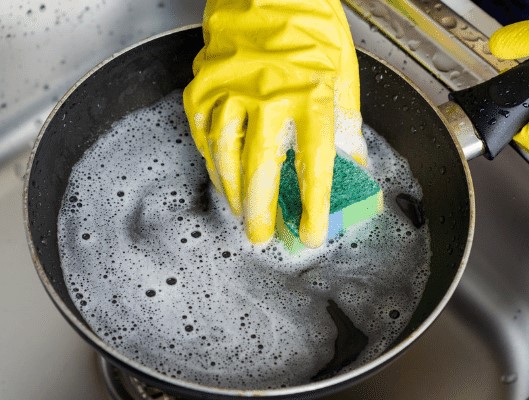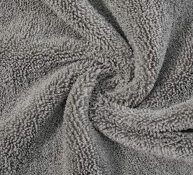
Preserving Your Pots and Pans: Expert Tips for Effective Cleaning Without Damage
When it comes to cleaning pots and pans, it’s important to strike a balance between efficiency and preserving their quality. Scrubs, scourers, magic sponges, and microfiber products can all be useful for this task. Here are some tips to help you clean your pots and pans efficiently without causing damage:
Microfiber Products:
Microfiber cloths and pads are excellent for cleaning pots and pans due to their soft and absorbent nature. Follow these tips for efficient use:
- Dampen the cloth or pad: Lightly dampen the microfiber cloth or pad with warm water to help loosen food residues.
- Gently wipe the surface: Use the damp microfiber cloth to wipe the pot or pan, applying moderate pressure as needed. Microfiber’s fine fibers can capture dirt and grime effectively without scratching.
- Use mild detergents when necessary: For tougher stains or greasy residues, apply a small amount of mild dish soap or a gentle cleaning solution to the microfiber cloth. Avoid using abrasive cleaners or chemicals that may harm the cookware.
- Rinse thoroughly: After cleaning, rinse the pot or pan with warm water to remove any soapy residue. Dry it thoroughly with a clean microfiber cloth to prevent water spots or streaks.
Magic Sponge:
Magic sponges, also known as magic erasers, are versatile for cleaning pots and pans. Follow these steps for efficient use:
- Wet the sponge: Moisten the magic sponge with water before use. Avoid using it on dry surfaces, as this may cause scratching.
- Gently scrub: Apply gentle pressure and use a back-and-forth or circular motion to clean the surface. The sponge’s fine abrasive structure can remove stubborn stains without excessive force.
- Test on a small area: Before using the magic sponge on your entire pot or pan, test it on a small, inconspicuous area to ensure it doesn’t cause any damage or discoloration.
Scrubs and Scourers:
Scrubs and scourers are effective tools for removing tough food residues and stains from pots and pans. Follow these guidelines:
- Select the appropriate type: Choose a scrub or scourer that matches the material of your cookware. Non-abrasive options are suitable for non-stick or delicate surfaces, while abrasive varieties work well for stainless steel or cast iron.
- Avoid harsh abrasives: Avoid using metal scourers or harsh abrasives on non-stick cookware, as they can damage the coating. Opt for nylon or plastic scrubbers specifically designed for non-stick surfaces instead.
- Apply gentle pressure: Use moderate pressure while scrubbing to avoid scratching the surface. Combine the scrub or scourer with a mild dish soap or baking soda paste for added cleaning power.
Remember to always follow the manufacturer’s instructions for your specific cookware. Some materials may have unique cleaning requirements or restrictions.
You can efficiently clean your pots and pans without causing damage. Regular maintenance and immediate cleaning after use can also help prevent stubborn stains and make the cleaning process easier.






